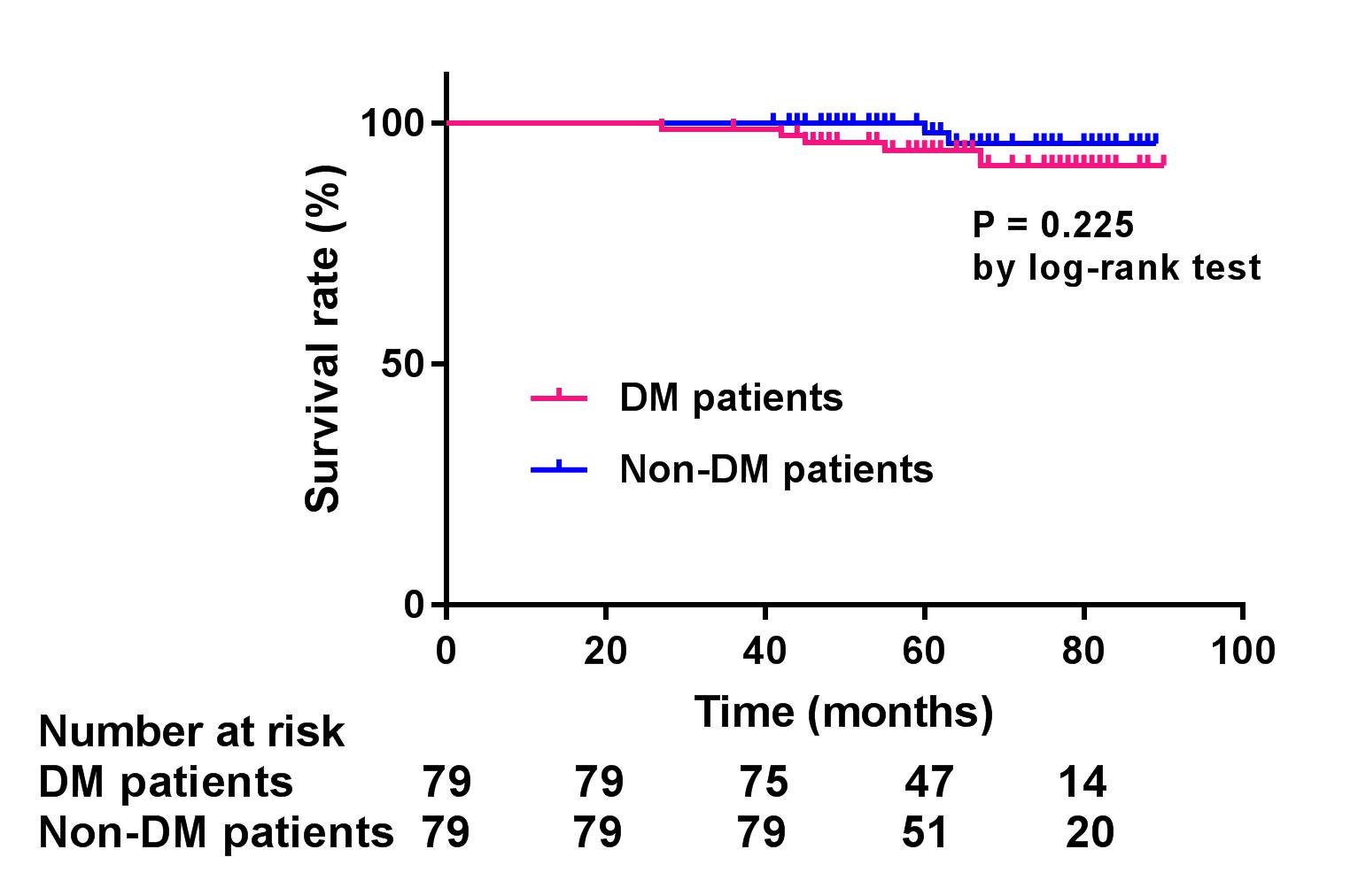Propensity-Matched Comparison of Diabetic Patients and Non-Diabetic Patients in Living Donor Kidney Transplantation.
C. Baek,1 H. Kim,1 W. Yang,1 D. Han,2 S.-K. Park.1
1Division of Nephrology, Department of Internal Medicine, Asan Medical Center, Seoul, Republic of Korea
2Department of Surgery, Asan Medical Center, Seoul, Republic of Korea
Meeting: 2017 American Transplant Congress
Abstract number: D148
Keywords: Graft survival, Infection, Kidney transplantation
Session Information
Session Name: Poster Session D: Kidney: Cardiovascular and Metabolic
Session Type: Poster Session
Date: Tuesday, May 2, 2017
Session Time: 6:00pm-7:00pm
 Presentation Time: 6:00pm-7:00pm
Presentation Time: 6:00pm-7:00pm
Location: Hall D1
Background: Kidney transplantation (KT) reportedly provides a significant survival advantage over dialysis in diabetic patients. However, KT outcome in diabetic patients compared with that in non-diabetic patients remains controversial. In addition, owing to recent improvements in the outcomes of KT and management of cardiovascular diseases, it is necessary to analyze outcomes of recently performed KT in diabetic patients.
Methods: We reviewed all diabetic patients who received living donor KT between January 2008 and December 2011. Each patient was age- and sex-matched with two non-diabetic patients who received living donor KT during the same period. The outcomes of living donor KT were compared between diabetic and non-diabetic patients using propensity-score matching.
Results: Among 887 patients, 89 diabetic patients were compared with 178 non-diabetic patients. The incidence of acute rejection was not different between the diabetic and non-diabetic patients (odds ratio (OR) 1.005, 95% confidence interval (CI) 0.556-1.814, P=0.988 within 1 year of KT; OR 1.218, 95% CI 0.749-1.983, P=0.427 after 1 year of KT). Diabetic patients experienced more sepsis within 1 year of KT. After 1 year of KT, urinary tract infection and other infections occurred more frequently in diabetic patients. The overall incidence of infection was not different between two groups within 1 year of KT, but diabetic patients experienced higher incidence of infection after 1 year of KT (OR 3.6, 95% CI 1.337-9.696, P=0.0113). Diabetes showed a trend of increasing the risk of graft failure without statistical significance after propensity score analysis (hazard ratio 4.999, 95% CI 0.584–42.785, P=0.1418).  Conclusions: ESRD patients with diabetes showed higher incidence of infection after 1 year of KT. Therefore, close monitoring of infection is important in diabetic KT recipients, and further studies of optimal immunosuppressant regimen in diabetic patients are necessary.
Conclusions: ESRD patients with diabetes showed higher incidence of infection after 1 year of KT. Therefore, close monitoring of infection is important in diabetic KT recipients, and further studies of optimal immunosuppressant regimen in diabetic patients are necessary.
CITATION INFORMATION: Baek C, Kim H, Yang W, Han D, Park S.-K. Propensity-Matched Comparison of Diabetic Patients and Non-Diabetic Patients in Living Donor Kidney Transplantation. Am J Transplant. 2017;17 (suppl 3).
To cite this abstract in AMA style:
Baek C, Kim H, Yang W, Han D, Park S-K. Propensity-Matched Comparison of Diabetic Patients and Non-Diabetic Patients in Living Donor Kidney Transplantation. [abstract]. Am J Transplant. 2017; 17 (suppl 3). https://atcmeetingabstracts.com/abstract/propensity-matched-comparison-of-diabetic-patients-and-non-diabetic-patients-in-living-donor-kidney-transplantation/. Accessed December 18, 2025.« Back to 2017 American Transplant Congress
